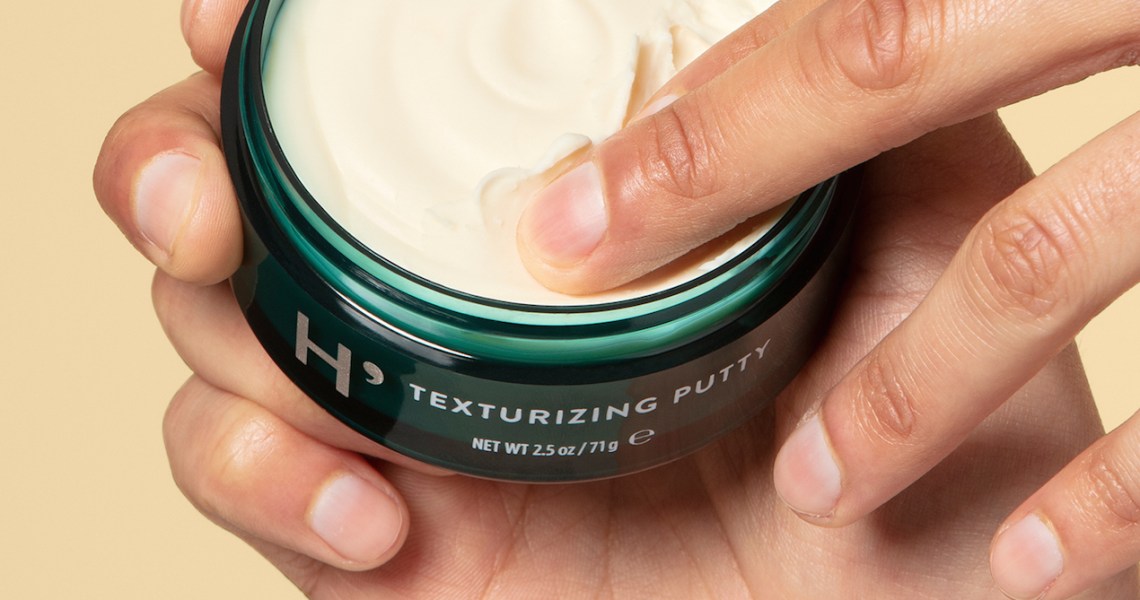When Harry’s launched its newest category of hair-care products in June, it was the culmination of over a year’s worth of labor.
Harry’s hair care includes a Taming Cream, Texturizing Putty, Sculpting Gel and a two-in-one shampoo and conditioner. Harry’s launched hair care in June, just a few weeks after revealing that it would be acquired by CPG company Edgewell for $1.37 billion. The aim for Edgewell was to reinvigorate a stagnating portfolio of Schick razors, Banana Boat sunscreen and Wet Ones moist wipes, among others. The way Harry’s develops its categories is one proven strategy Edgewell brands may decide to adopt.
Every time Harry’s goes into the development of a new category, the company starts with foundational research which is conducted through its product development, marketing and insight teams, said Helen Sung, Harry’s senior director of product development and innovation. This time around, that consisted of consumer surveys, competitive benchmarking and in-store shop-alongs with customers to understand their pain points. Next came physical product development, which included in-office and at-home testing; then, finally, it was time to finalize the assortment for stores. Harry’s received feedback from over 3,000 men through face-to-face research, in-store shop-along interviews, in-office concept testing and at-home product testing. The following is a look at how Harry’s tackled a crowded market and tried to improve upon existing user experience pain points.
Data Galore
In a June 2018 survey of 527 men conducted by a third-party provider, Harry’s found that 40% of men put “a lot of effort” into their styling most days of the week, but the same number of men also reported being unsatisfied with the products they used. The biggest issues were that gel products provided a strong styling hold, but ended up making hair feel crunchy and flaky; putty provided grip and matte-style hold, but was difficult to apply; creams were too heavy for curly hair or left hair overly sticky.
The initial foundational research phase took about two months, Sung said, and afterward, the research and development team developed a framework of what the new product should be and what it should do. Cosmetic chemists began working on multiple formulas, with each product going through 30 and 50 iterations, she said.
“When we have our concept locked in and know what we want to work on, we start briefing our chemists to create the product and [then get] guys in the office to try it,” she said.
Harry’s has a stylist come in and recruits men in the office with various hair types to have their hair washed and blow-dried, and then have different products tested on each side of their hair to compare. Over 100 men participated during this phase of development.
Ad position: web_incontent_pos1
“It gives us quick feedback, and we can see the results immediately when the product is formalized through at-home testing with consumers through a third party,” Sung said, adding that the company tested for all hair types.
Stop and Shop
Harry’s deployed a team of people to follow real-time shoppers at Target and Walmart, where Harry’s products are now carried, to understand merchandising pain points.
“Our core insight was that guys were overwhelmed by choice at retail,” said Michelle McKinney, Harry’s shopper marketing director. For example, there are dozens of products and brands “cluttered” together, and products like a hair putty can have different descriptions across brands. To help navigate the hair aisles, guys look for familiar signals such as level of hold and product texture to determine which products are right for them, she said.
The core way Harry’s tried to improve the shopping experience was through a nicer-looking merchandising fixture that helps people see the products from up to 5 feet away. All of Harry’s hair products are displayed together, although the brand cannot control the adjacent brands next to them, said McKinney. The product merchandising fixture was designed to visually communicate, through close-up photography, the texture inside the bottle. It marks the first time Harry’s has included photography in its retail fixtures.
Additionally, Harry’s found that a universal pre-purchase behavior for male shoppers was opening a product to test it in their hand, if not their hair. “Ideally, you don’t want a bunch of people touching a product before you buy it, so that was something we wanted to help solve for,” she said. The level of product hold is also printed directly on the packaging, as well as on the fixture.
Ad position: web_incontent_pos2
Online through Target.com, Walmart.com and Harrys.com, Harry’s created visual product pages to try and communicate the touch and texture of the products featuring a broad range of men with different hair types using the products, along with product texture imagery.




